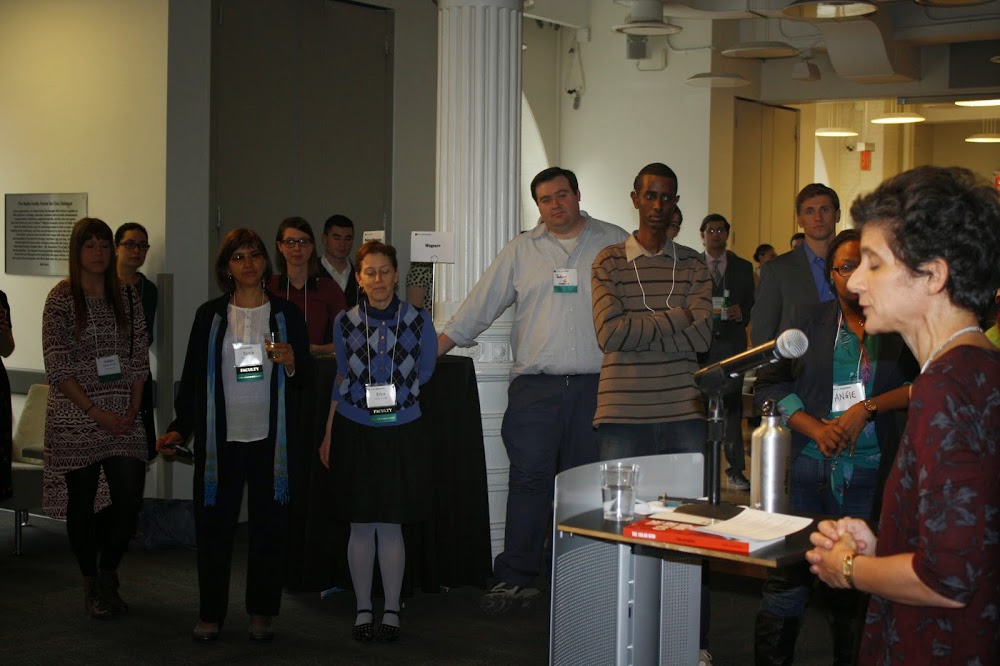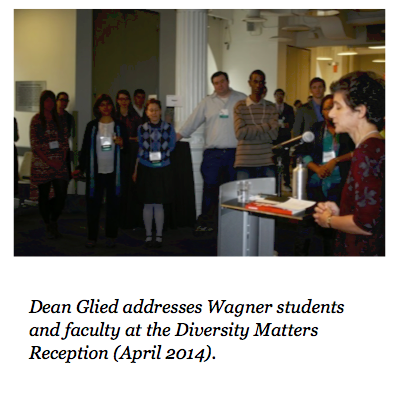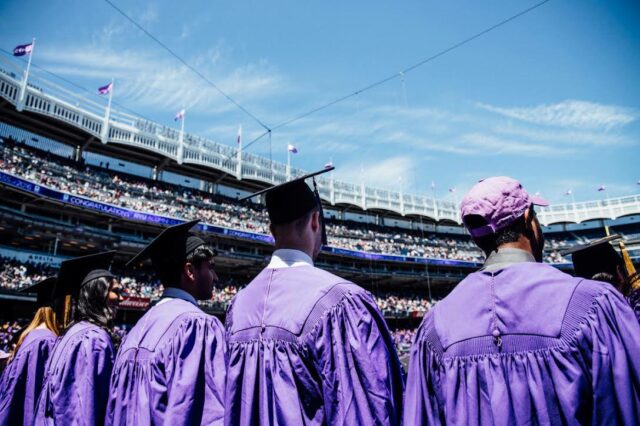Part One of a Series on Diversity & Social Justice in Higher Education
There has been a lot of national conversation around lack of diversity in higher education in recent years, revived by the recent release of the film Dear White People. After decades of being plagued by same issues, why is diversity still a problem in higher ed?
Last month, Simone Andrews, a second-year at NYU Wagner Graduate School of Public Service, hosted a talk entitled “Brave Conversations: Transforming Diversity at Wagner.â€Â Andrews initiated the talk after feeling underwhelmed by the conversations happening around race and identity. “Even though Wagner has a diversity statement on their website, and although there is faculty interested in it, talking about it and practicing it are different things,” Simone says.
Part of the problem is the framework of “diversity†itself. Diversity does not seek to address the root problem of power inequity. Rather, diversity concentrates on surface-level differences instead of power and privilege when it comes to issues of identity.
Why does this distinction matter? Identities are linked with privilege, and privilege, at its foundation, functions at the expense of other people. For example, being white affords one with daily taken-for-granted unearned privilege, from seeing representations of your race everywhere to never feeling targeted by the police due to race. But this privilege has not emerged from thin air; rather, white privilege is rooted in America’s history of land, ideas, labor, etc. stolen from other people (e.g., the genocide of indigenous people in the Americas, the slavery of African Americans, etc.). This privilege is enforced and reinforced through a perpetual system of racial domination that marginalizes people of color and privileges white people.
NYU Wagner and many other higher ed institutions often ignore this, conflating surface-level diversity with what diversity practices, in theory, aim to correct (i.e., systemic racism). NYU Wagner Professor Erica Foldy explains how diversity frameworks were created specifically to thwart real and difficult conversations around racial justice. “The diversity discourse was created by the business community as a more palatable alternative for white people than genuinely pursuing affirmative action and equal employment opportunities for people of color,†says Foldy.
Students of color across the country see through this superficial posturing and yearn for more critical engagement of race and marginalization at the post-secondary level. Carlette Quinto, a second year at NYU Silver School of Social Work explains, “Silver is known to be a ‘clinical’ school yet we are not talking about the depth of institutionalized racism within our own profession and how we are perpetuating the cycle of oppression with the communities and clients we serve.†Autumn Holmes, a graduate student at the University of California Irvine, says “diversity is a lot [about] increasing the numbers of ‘diverse’ students but not actually increasing the quality of how these students are treated and the cultural climate [they] find themselves in.â€
Andrews advocates for a social justice lens instead of a diversity framework void of power analysis. How would a social justice lens be different than a diversity framework? Social justice recognizes power imbalances and aims to redistribute power and resources to those that have been historically marginalized. In addition to improving enrollment rates among Black students and recruiting and retaining more faculty of color, a social justice lens means addressing microaggressions that students face on a daily basis. It means taking the responsibility of promoting introspection of privilege and power in classrooms, and listening to and learning from the safe spaces created by and for students of color. At the very least, a social justice lens would encourage institutions to address the concerns of students of color, instead of focusing on ways to make themselves look better by being “more diverse.â€
Students in many institutions (e.g., University of Michigan, UCLA, and Harvard) have been leading these social justice conversations. Andrews is following suit by convening a council of students that will start to address racial and social justice at NYU Wagner. “It’s about bringing together people who want to think about anti-racism policies, trans–inclusivity, ability, etc., at the same time, and their relation to power so we can think about a more equitable society,†Andrews explains. “I want to move past this language about enhancing what’s already there. It’s not about making a bad system better. It’s about whole new approaches to diversity.”
This is Part One of a Series on Diversity & Social Justice in Higher Education which will focus on the lived experiences and intersectionality in social justice frameworks, in the Wagner Review. Next in the series: Dear Higher Ed: Your Policies Affect our Lived Experience.
Zara is a community organizer from Michigan and an MPA Candidate at New York University’s Wagner Graduate School of Public Service. She enjoys mango lassi, social activism, and catching up on the latest Shonda Rhimes show.





